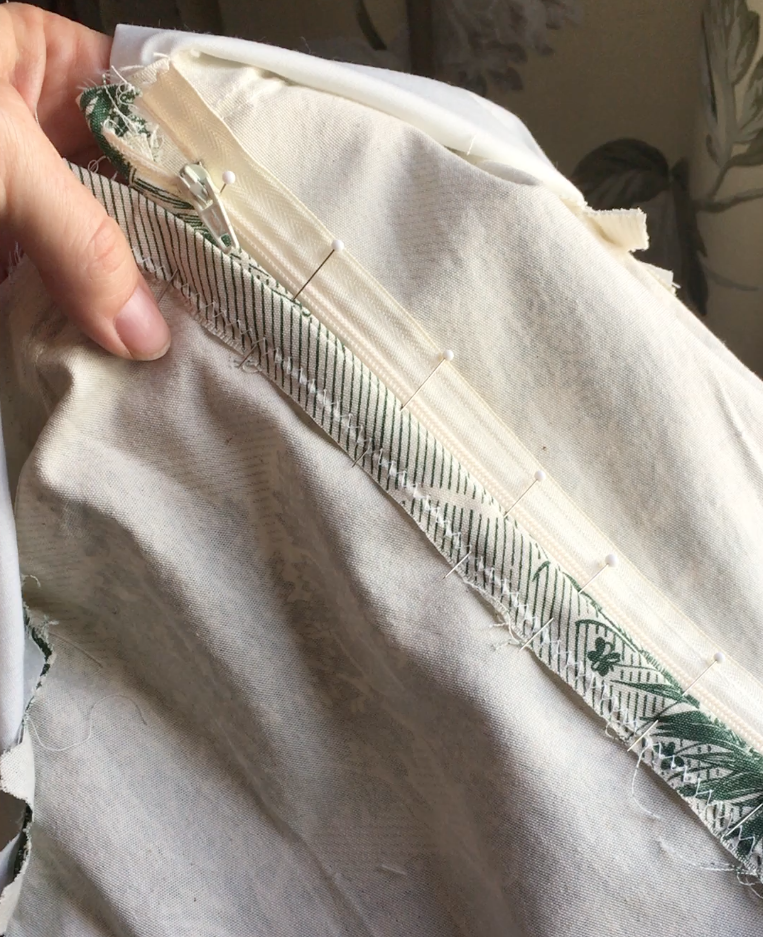How to Insert a Lapped Zipper (with video!)
I've never been a huge zipper fan, and, since my favorite historical fashion periods fall long before the invention of the zipper, I've been pretty safe. But, of course, once you jump into the 1940s and 1950s, you run into more and more zippers, and it was inevitable I'd have to get cozy with them eventually! For years, my default has been the invisible zipper, which hides in a seam beautifully, leaving only an elegant pull at the top. But those zips take special feet to insert them neatly and correctly, and they can be a bear to get just right. So when I found an original 1950s dress with a lapped zipper opening, I decided to see if it was possible to fall in love with sewing zippers the vintage way. Lo and behold, it is, and I am delighted to share this "new" old method with you so you can insert your own zippers with minimal pain. While my samples here show back and front seams, you can also insert a lapped zipper into a side seam.I've made a video of all the steps, which you can watch below, but I've also got photo instructions in this post, since it's often more enlightening to see something laid out step by step so you can refer back to each section as you go. Without further ado, let's insert a lapped zipper!
First, baste the seam closed:
It doesn't matter if you're working on a front or back or side seam, you'll start like most conventional zipper instructions tell you to, by basting the seam closed for the length of the zipper:
After stitching, press the seam open neatly:
One quick note: I like the finish the fabric edges with a zigzag or overcasting stitch so I don't get a lot of frayed threads bothering me while I work, even if the seam will eventually be enclosed in lining, as on this sample dress. In my photos, you'll see the edge of this back seam have been zigzagged.
Next, position the zipper:
Now let the zipper lie flat over the center back seam, just as you'd do with a conventional zipper insertion:
Stitch the first half of the zipper tape to the seam allowance:
Now fold the zipper away from the dress, zip it closed, and pin it:
Next, stitch the seam allowance in this area:
Stitch to the pull, then leave your needle in the fabric, lift the presser foot, and push the zipper's pull back up past the foot:
Now stitch down the rest of the seam:
Secure the second half of the zipper:
Use your seam ripper to carefully unpick the basting stitches down the seam. Rolled up tape will help you pull all the loose threads out afterwards.
Finishing a lined dress:
If you've lined your bodice, you will now need to fold under the center back edges and secure them to the inside of the dress on either side of the zipper. The first half is the easiest, as a simple 5/8"fold will place the fabric directly next to the zipper's teeth on the tape:
The other half (under the lap) can be folded under and pinned in place as well, but you won't want to whipstitch it in place, as you'll end up enclosing your zipper:
Instead, you'll do a line of small running or tacking stitches through the zipper tape and the lining below the teeth to secure the lining and finish off that edge.And there you go! You've got a beautiful, functional closure that doesn't scream "ZIPPER!" quite as loudly as a conventional zipper closure -- and that I actually find easier to do than an invisible zipper. If you'd like to see how to replace the front button closure on my Ladies' Classic 1950s Shirt Dress with a lapped zipper, watch my video, as I explain the little tweak to the instructions that will see you through. Happy sewing!


























